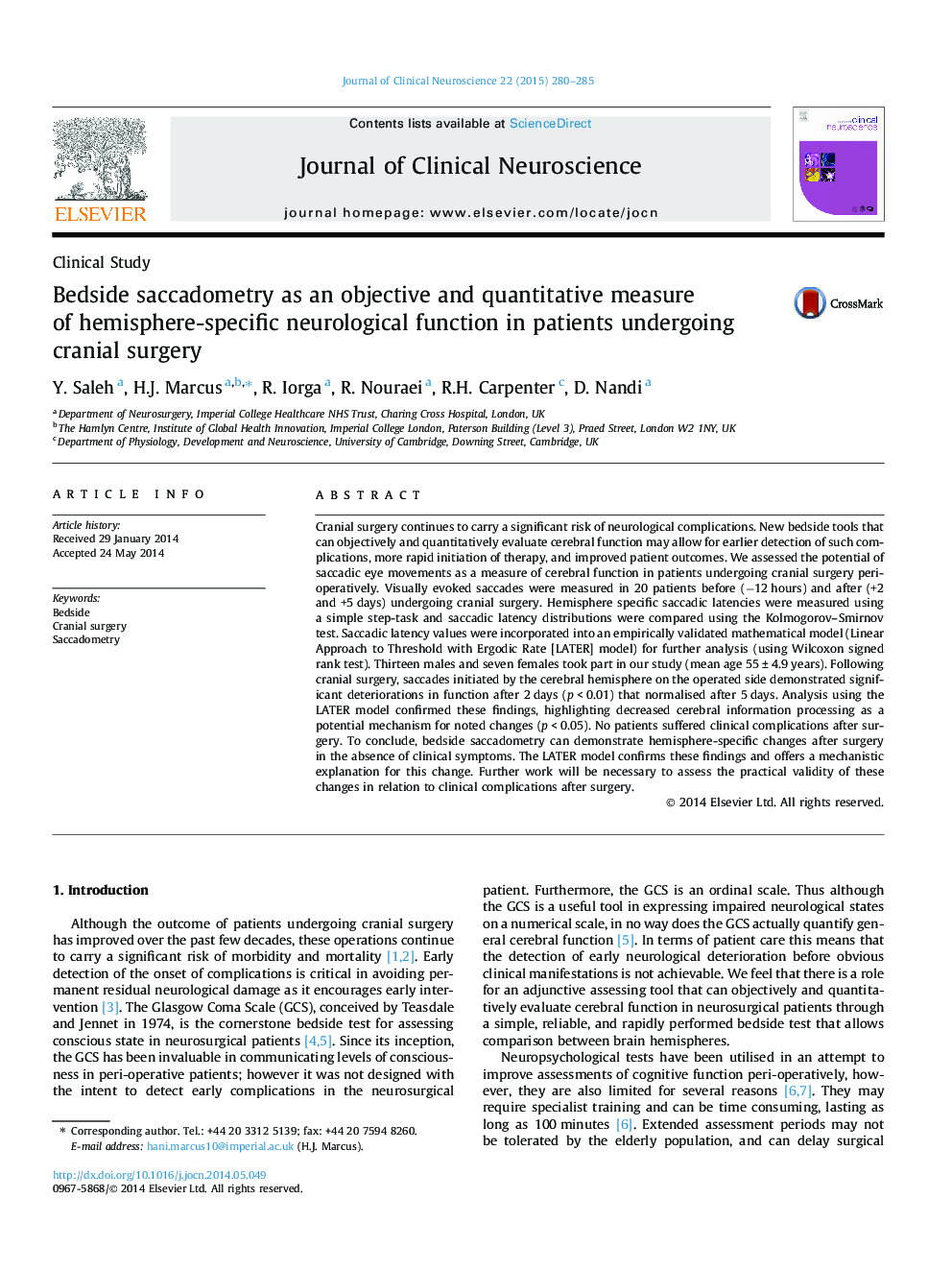| Article ID | Journal | Published Year | Pages | File Type |
|---|---|---|---|---|
| 3059547 | Journal of Clinical Neuroscience | 2015 | 6 Pages |
Cranial surgery continues to carry a significant risk of neurological complications. New bedside tools that can objectively and quantitatively evaluate cerebral function may allow for earlier detection of such complications, more rapid initiation of therapy, and improved patient outcomes. We assessed the potential of saccadic eye movements as a measure of cerebral function in patients undergoing cranial surgery peri-operatively. Visually evoked saccades were measured in 20 patients before (−12 hours) and after (+2 and +5 days) undergoing cranial surgery. Hemisphere specific saccadic latencies were measured using a simple step-task and saccadic latency distributions were compared using the Kolmogorov–Smirnov test. Saccadic latency values were incorporated into an empirically validated mathematical model (Linear Approach to Threshold with Ergodic Rate [LATER] model) for further analysis (using Wilcoxon signed rank test). Thirteen males and seven females took part in our study (mean age 55 ± 4.9 years). Following cranial surgery, saccades initiated by the cerebral hemisphere on the operated side demonstrated significant deteriorations in function after 2 days (p < 0.01) that normalised after 5 days. Analysis using the LATER model confirmed these findings, highlighting decreased cerebral information processing as a potential mechanism for noted changes (p < 0.05). No patients suffered clinical complications after surgery. To conclude, bedside saccadometry can demonstrate hemisphere-specific changes after surgery in the absence of clinical symptoms. The LATER model confirms these findings and offers a mechanistic explanation for this change. Further work will be necessary to assess the practical validity of these changes in relation to clinical complications after surgery.
